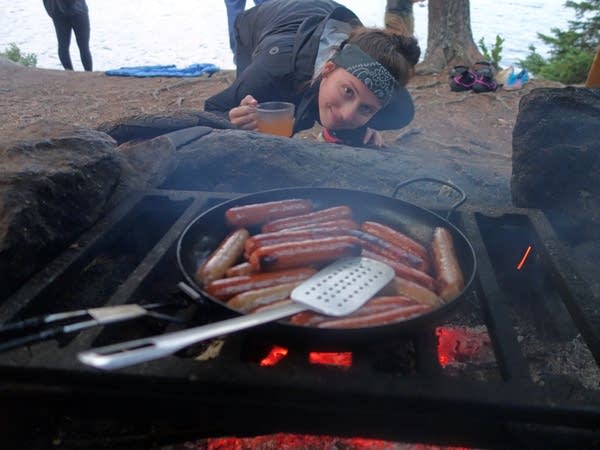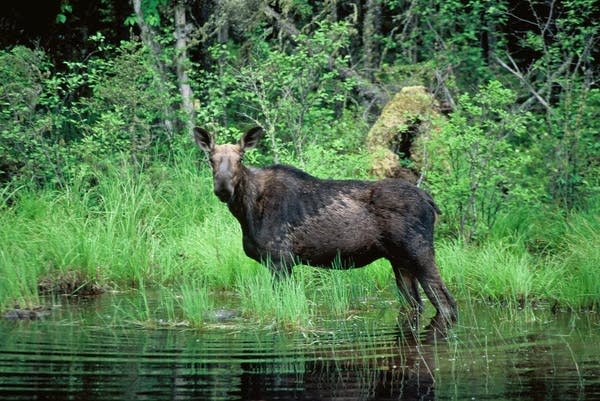Boundary Waters newbie? Here's how to eat, plan, paddle and get home

Go Deeper.
Create an account or log in to save stories.
Like this?
Thanks for liking this story! We have added it to a list of your favorite stories.
Updated 1 p.m. | Posted 4 a.m.
The Boundary Waters Canoe Area Wilderness is one of Minnesota's best-loved outdoor spaces. And with more than 1 million acres of glassy glacial lakes, thick forests and streams, that's for good reason.
Still, the Boundary Waters' vastness and isolation can make planning that inaugural trip a daunting task.
Turn Up Your Support
MPR News helps you turn down the noise and build shared understanding. Turn up your support for this public resource and keep trusted journalism accessible to all.
• More resources: Enjoy all the outdoors has to offer in Minnesota
• Share your adventures: Inspire other Minnesotans to get out, too!
• Why it's important: We have a lot to gain by getting outdoors
Maybe it's the bears. Or the lack of electricity and cell phone service. Or the fact that you have to carry all your belongings in backpacks — and all of your trash back out with you.
Whatever the reason, a trip to the Boundary Waters belongs on any Minnesota summer bucket list.
Some people hire a guide to plan their trip, pack and gather all the supplies they need, and take them into the woods.
But with a little research and planning, it's also possible to take a first trip independently.
I've been going to the Boundary Waters since I was 9 years old, mostly on trips with veteran campers.
But last month, I took a trip there with four first-timers. It reminded me of all the idiosyncrasies to Boundary Waters life that first-timers might not think about before their first trip in.
How to start

First, decide on an entry point.
For a quieter trip, look for one that only allows paddling.
And consider the distance between you and the BWCA. How long will you be driving? If your trip makes for an afternoon or evening arrival, you won't want to head into the Boundary Waters right away — traveling or setting up camp in the dark is a bad idea.
So, if you have a ways to drive, consider finding an entry point near a campground or hotel where you can sleep the night before trekking into the woods.
Once you've picked a spot to start, get a permit. Then you can start planning a route.
Keep in mind, as you do: Your first trip shouldn't be any sort of wilderness odyssey.
Alissa Dahle-Koch, a crew member at Sawbill Canoe Outfitters in Tofte, Minn., recommends newcomers plan a short loop and stay in the woods for three to four days. She said it's a good idea for first-time BWCA campers to set up one campsite for the whole trip and take day trips from that spot, rather than packing up all your gear to travel — and make camp — every day.
That way, she said, "it's not super-exhausting and you can enjoy the Boundary Waters."
Most of your traveling in the Boundary Waters will be by canoe, which you can rent from an outfitter. If you've never paddled before, outfitters can show you some of the basics.

While paddling, expect to average about 3 mph. Most lakes are connected by short trails known as portages in BWCA parlance.
Portage lengths vary widely, so remember that the trails use an antiquated measuring unit called the rod. One rod equals 16.5 feet — and 320 rods make a mile. Some trails are just a couple rods long, others top a mile. So, consider your abilities when deciding which portages to tackle.
On my most recent Boundary Waters trip, we took two portages — one short, one about a half-mile long. That ended up being a good distance for us, given the added factor of less-than-ideal weather.
A good rule for your maiden voyage: Stick to two or three portages from your entry point. That should make for a good first-trip length.
How to pack

The internet abounds with checklists for what to bring with you, so I won't waste time on the details here.
When choosing your clothes for the trip, you won't need a lot. There's no shower in the wilderness, so yes, you'll probably wear more dirty clothes than usual.
You can use biodegradable soap to clean yourself, but not in the lake. The rules say you must be at least 150 feet from water sources when bathing or washing dishes.
Dahle-Koch said that two key items people often leave at home (but shouldn't!) are a rain jacket and sturdy shoes.
Remember those, plus long pants and sleeves. Even if it's too hot for a jacket, having your skin covered keeps mosquitoes and sunburn at bay.
What to eat

Food might be the trickiest thing to get used to in the woods. There are plenty of constraints — bringing only what you can carry (and factor in any waste you'll create, as you have to carry trash back out of the woods with you); cooking over just a fire or lightweight camp stove; existing without a fridge. Plus, you'll want to hang any food out of the reach of bears or other animals.
But don't worry, your BWCA diet doesn't have to be limited to trail mix and just-add-water backpacker dinners. On that trip last month, which lasted three days, we fit more than enough food for seven adults in two backpacks.
One pack was a bear-resistant container and the other was an insulated cooler pack, which opened up our dining options.
Day One
Breakfast was granola bars and coffee.
For lunch, it was salami, cheese, crackers, bread and trail mix.

Dinner was spaghetti boiled over the fire with beef sauce we'd prepared ahead of time at home. And on the side, we made cheesy garlic bread by slicing two ciabatta loaves down the middle, adding shredded cheese and garlic powder inside, then wrapping the loaves in tin foil so we could toast them and melt the cheese over a fire.
Day Two
French toast, bacon and coffee for breakfast.
Lunch was more meat, cheese, crackers and bread, plus grapes.
For dinner, we had brats wrapped in tortillas, for un-squishable buns, plus chips. (Hint: Pringles canisters keep the chips safe from cracks.)
Day Three
Breakfast was granola bars, oatmeal and coffee.
We traveled back to our car over lunchtime, so we kept out some snacks for a midday meal.
It's possible to make most dishes in the woods — it just takes a little planning.
Staying safe
The Boundary Waters made headlines this summer after three people were killed and more hurt during severe storms.

But such tragedies are rare in the BWCA, and Dahle-Koch says they shouldn't stop anyone from taking a trip there.
"Weather, it happens," she said. "But I don't think people would have a reason to be fearful."
Again, bring a rain jacket (and rain pants, if you have them) and make sure you have a plan, should severe weather strike. In general, the pros suggest you stay close to the ground — lower than the objects that'd likely get hit by lightning first.
A good bet is to get low and find a group of small trees or bushes — small enough they can't hurt you if they fall. And pay attention to trees that could get knocked down by a storm. You don't want them landing on you.
Bring a first-aid kit, too. Bandages, antibiotic ointment, anti-itch cream for bug bites and gels for small burns often come in handy for the small injuries most common while camping.
It's also crucial to remember that you can't rely on a quick rescue in the case of medical emergencies when you're camping in the Boundary Waters.
If you're concerned with being so cut off from any emergency services, consider buying an emergency pager that can locate you and call for help, or get a satellite phone.
And one more thing: Watch this. It's the video all campers are required to watch before entering the Boundary Waters. A little dated, sure, but it illustrates just about all of the basics.
It shows that, with proper preparations, a BWCA trip can be just as good as (or better than) a week on the beach.
Editor's note (Aug. 11, 2016): An earlier version of this story indicated it would be OK to bathe in Boundary Waters lakes using biodegradable soap. To clarify, Forest Service rules note that all soaps pollute, and they require bathing and dish washing be done at least 150 feet away from water sources.


